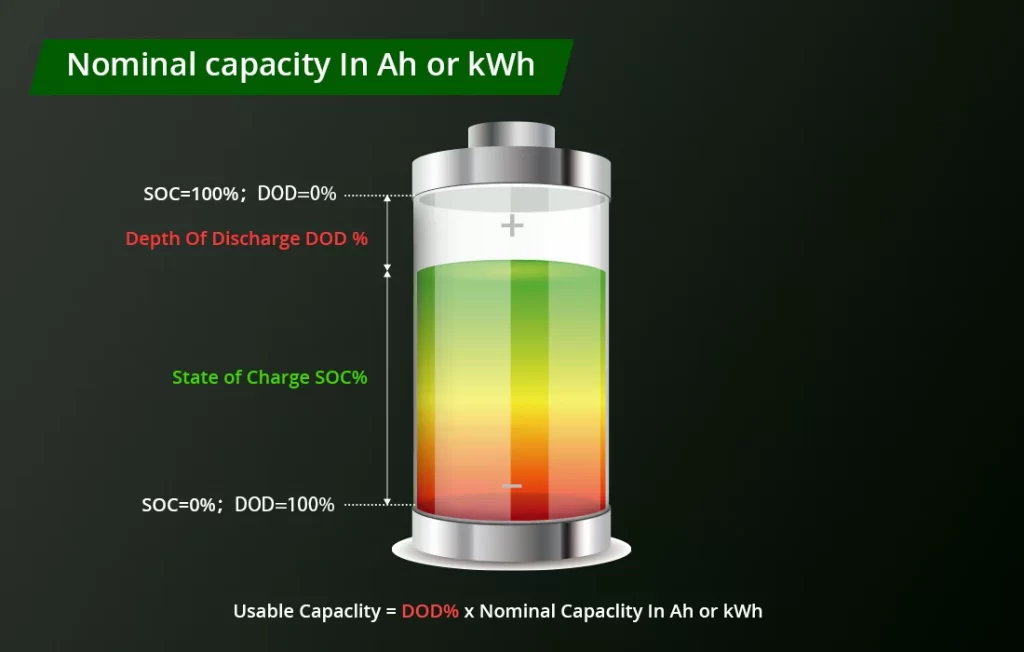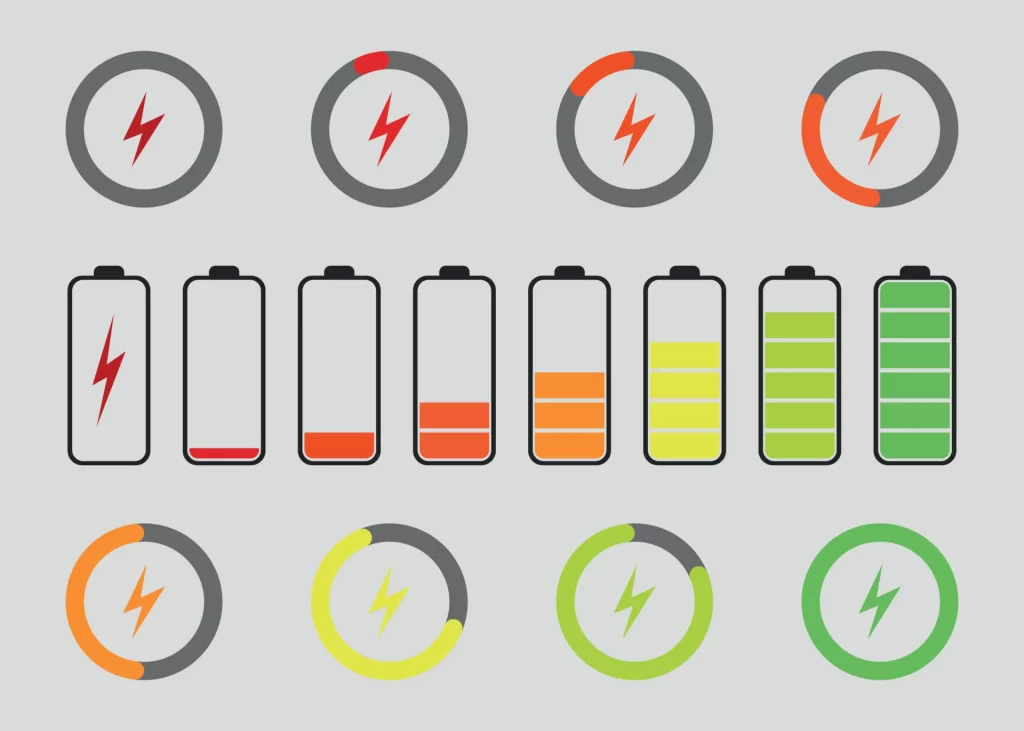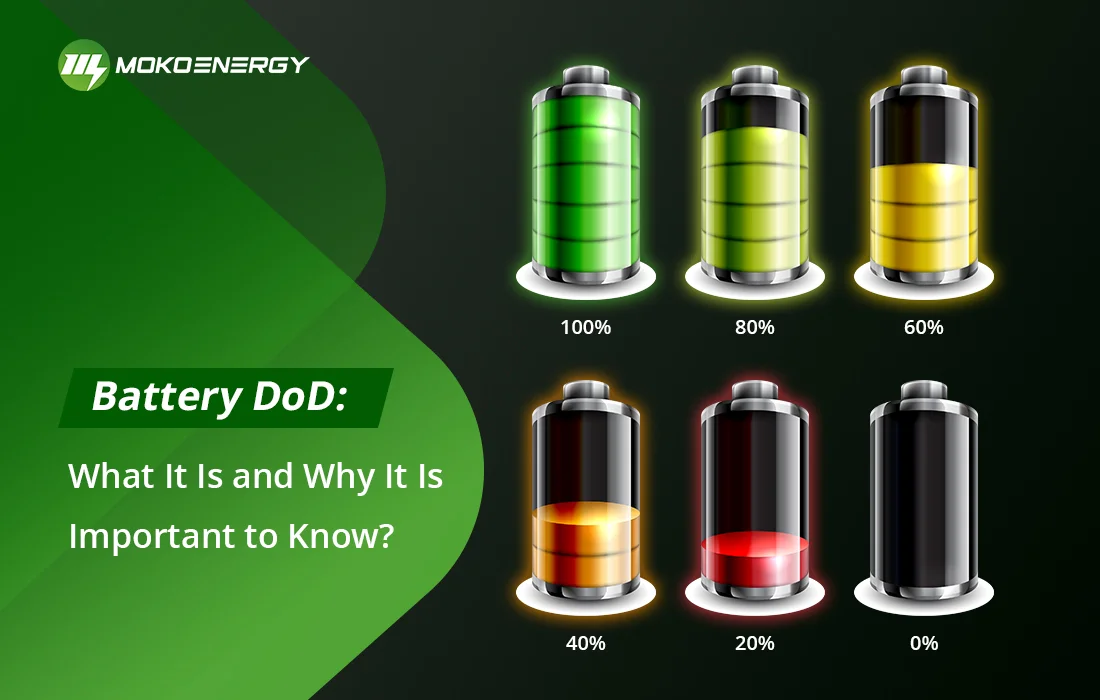Batteries power everything from smartphones and laptops to electric vehicles and energy storage systems. However, one crucial factor that often goes overlooked in battery management is the depth of discharge (DoD). This concept is seemingly simple. However, it is important in determining a battery’s performance, lifespan, and overall efficiency. In this comprehensive guide, we’ll tell you about the meaning of battery DoD, and explore its importance in optimizing battery management.
What is Battery DoD?
The battery DoD value is a parameter that describes the depth of discharge of a battery during use. The full name is “Depth of Discharge”. DoD of a battery indicates the ratio between the amount of battery discharge and the total charge.
In real applications, the DoD value is often expressed as a percentage. For example, if the value is 50%, it means that the battery has discharged half of its total charge. It is worth mentioning that the DoD value is closely related to the battery’s remaining charge. When the DoD value increases, the remaining charge decreases accordingly.
It is important to learn the battery DoD value in battery management and maintenance. The safe range of DoD value is different for different types of batteries. Generally speaking, too deep a discharge depth (i.e. higher DoD value) may lead to battery damage or reduce battery life. Therefore, reasonable control of the battery DoD is the key to extending battery life and ensuring battery safety.
For example, in electric vehicles, DoD management of the battery pack is critical. If the driver frequently uses the battery to a lower remaining charge, it may shorten the battery life and even render the vehicle undrivable in some cases. For this reason, BMS in electric vehicles typically limits the maximum DoD value of the battery to protect the battery and ensure proper vehicle operation.
State of Charge & Depth of Discharge
DoD is distinct from the state of charge (SoC), which indicates the remaining capacity of a battery as a percentage of its maximum capacity. While DoD focuses on the discharged portion, SoC represents the remaining charge. The state of charge (SoC) is the complementary concept to DoD, representing the remaining capacity of a battery as a percentage of its maximum capacity. For instance, if a battery has a DoD of 30%, its SoC would be 70%.
Monitoring the SoC is crucial for effective battery management, as it helps determine when a battery needs to be recharged and how much capacity is available for use. It’s important to note that SoC and DoD are inversely related, with their sum always equaling 100%.

Why is Depth of Discharge Important to Know?
Understanding and managing a battery’s depth of discharge is paramount for several reasons:
- Battery Life and Performance: High DoD levels subject a battery to more stress, leading to accelerated degradation and shorter lifespan. By limiting the DoD, you can extend a battery’s cycle life and maintain optimal performance over time.
- Energy Efficiency: Deeper discharge cycles typically result in lower energy efficiency, as more energy is lost during the charging and discharging processes. Maintaining a lower DoD can improve overall system efficiency.
- Cost Optimization: Frequent deep discharges can shorten a battery’s lifespan, requiring premature replacement and increasing operational costs. Proper DoDmanagement can help minimize these expenses.
Depth of Discharge vs Cycle Life
DoD significantly impacts a battery’s cycle life, which refers to the number of charge-discharge cycles a battery can undergo before its capacity drops below a predetermined threshold (typically 80% of its initial capacity).
Higher DoD levels generally correspond to fewer achievable cycles, while lower DoD values allow for more cycles before significant degradation occurs.

Reducing the DoD can significantly extend a battery’s cycle life, making it a crucial consideration for applications where longevity is a priority.
How Depth of Discharge Impacts Different Types of Batteries
The impact of DoD on battery life and performance varies depending on the battery chemistry and application. Let’s explore how DoD affects some common battery types:
1. LiFePO4 Batteries:
- Characteristics: Lithium iron phosphate (LiFePO4) batteries are known for their high safety, long cycle life, and relatively low cost.
- DoDImpact: LiFePO4 batteries can typically handle higher DoD levels (up to 80-90%) without significant degradation, making them suitable for applications that require deep discharge cycles.
- Recommended DoDRange: For optimal performance and longevity, keeping the DoD between 20-80% for LiFePO4 batteries is generally recommended.
2. Lithium-Ion Batteries:
- Characteristics: Lithium-ion batteries offer high energy density, lightweight construction, and low self-discharge rates.
- DoDImpact: These batteries are more sensitive to high DoD levels, which can lead to accelerated degradation and capacity loss. Repeated deep discharges (below 20% SoC) should be avoided.
- Recommended DoDRange: For lithium-ion batteries, it’s advisable to maintain a DoD between 20-80% to maximize cycle life and performance.
3. Lead-Acid Batteries:
- Characteristics: Lead-acid batteries are relatively inexpensive, widely available, and suitable for high-current applications.
- DoDImpact: While lead-acid batteries can handle deep discharge cycles, excessive DoD levels (above 80%) can significantly reduce their lifespan due to sulfation and other degradation mechanisms.
- Recommended DoDRange: For optimal performance and longevity, it’s generally recommended to limit the DoD of lead-acid batteries to 50-80%.
It’s important to note that these recommendations are general guidelines, and specific applications or battery models may have different optimal DoD ranges. Consulting manufacturer specifications and considering the intended use case is crucial for effective battery management.
Further reading: DoD and Electric Vehicle (EV) Battery Packs
EV battery packs typically consist of hundreds or thousands of individual battery cells connected in series and parallel configurations.
Ensuring consistent DoD levels across all cells is crucial for maintaining pack performance, safety, and longevity. Imbalances in DoD can lead to uneven degradation, reduced range, and potential safety hazards.
Effective DoD management in EV battery packs involves:
- Implementing advanced BMS solutions with cell-level monitoring and balancing capabilities.
- Optimizing charging and discharging strategies to minimize DoD variations among cells.
- Incorporating thermal management systems to maintain consistent temperatures across the pack.
- Considering DoD limits and charge buffers to prevent excessive discharge and promote longer cycle life.
As the EV market continues to grow, innovations in DoD management and battery pack design will be essential for delivering reliable, safe, and long-lasting electric vehicles.
Conclusion
Whether you’re a homeowner looking to maximize the life of your solar energy storage system, a fleet manager aiming to extend the range and longevity of your electric vehicles, or an industrial operator seeking to optimize the efficiency of your backup power solutions, mastering the art of DoD management is a game-changer.
At MOKOEnergy, we specialize in providing cutting-edge battery management solutions tailored to various applications. Our advanced BMS offerings, coupled with expert consulting services, empower our clients to achieve optimal DoD control, extend battery life, and maximize the return on their energy storage investments. Contact us today to learn how we can revolutionize your approach to battery depth of discharge and unlock new levels of performance and efficiency.






